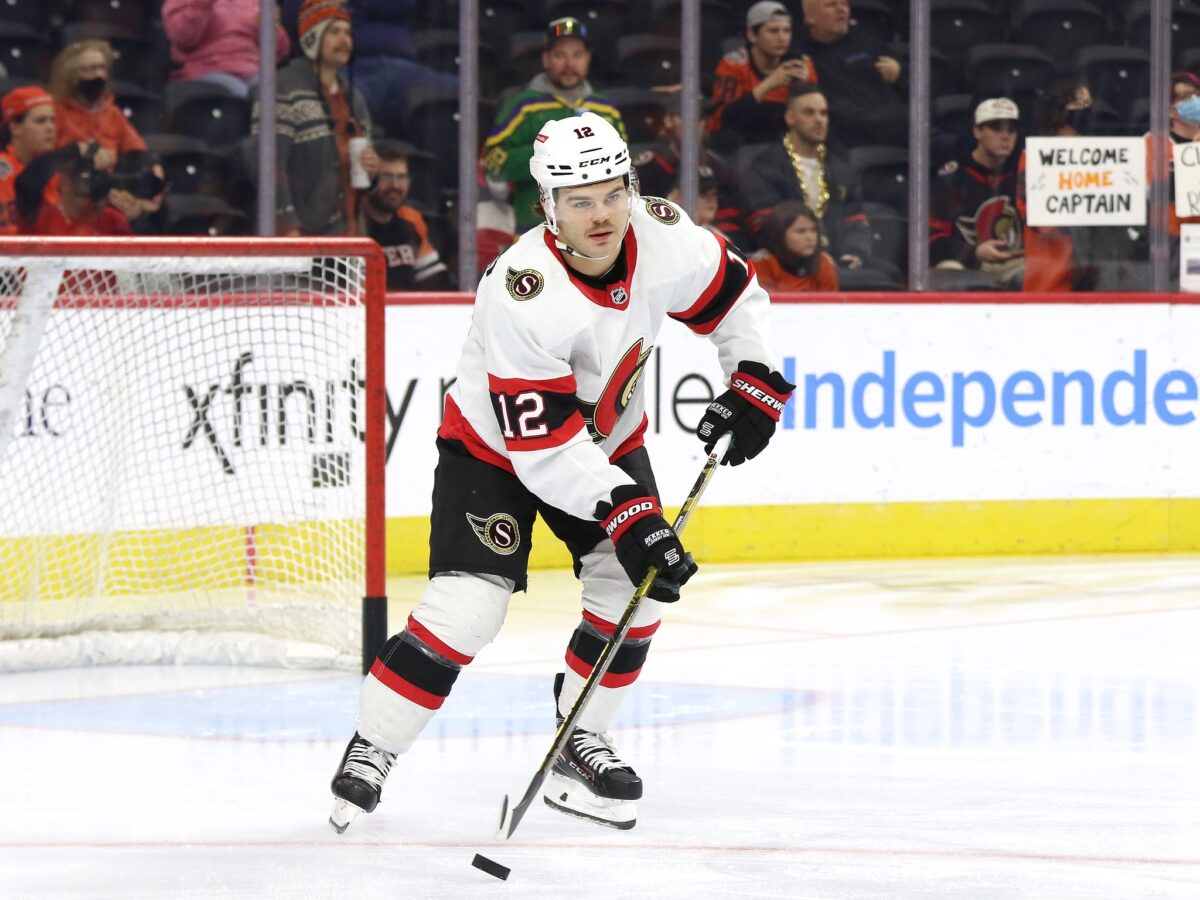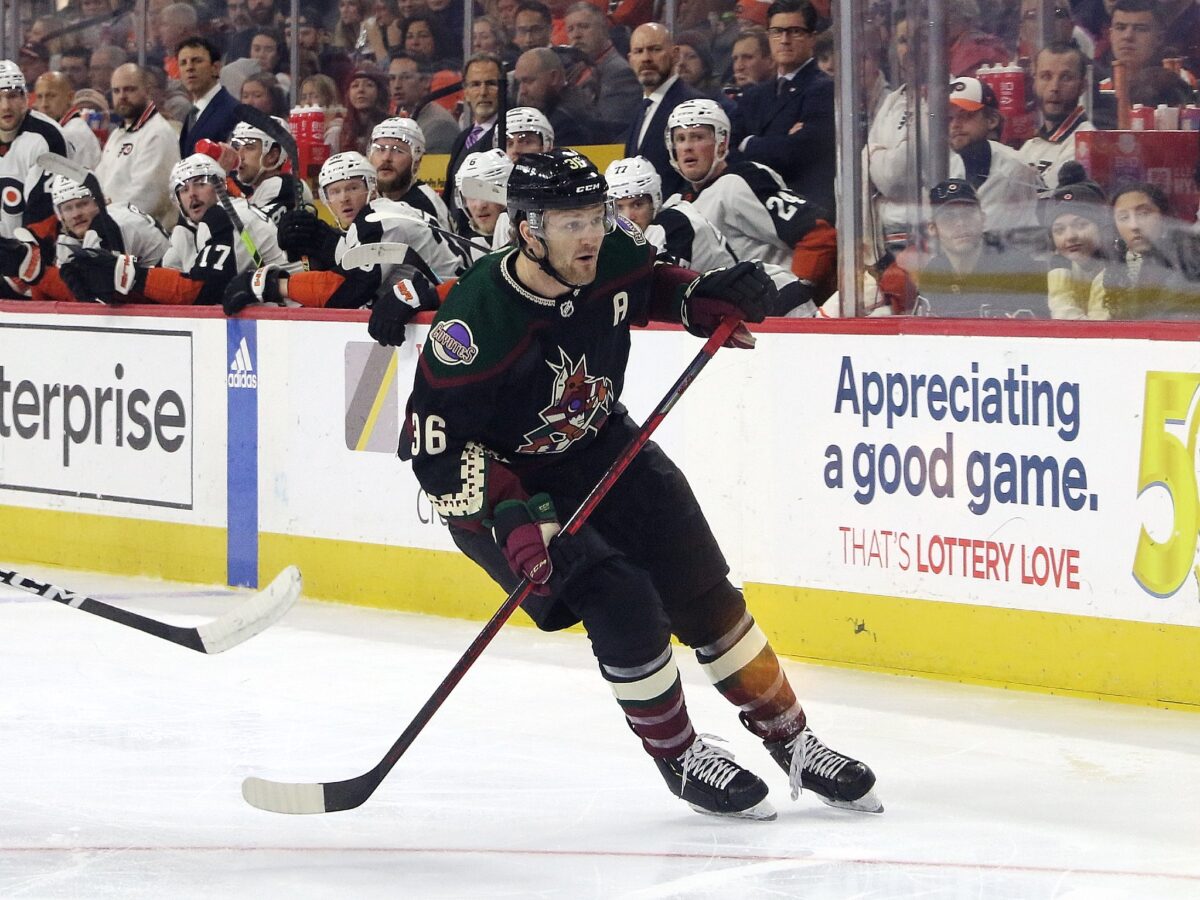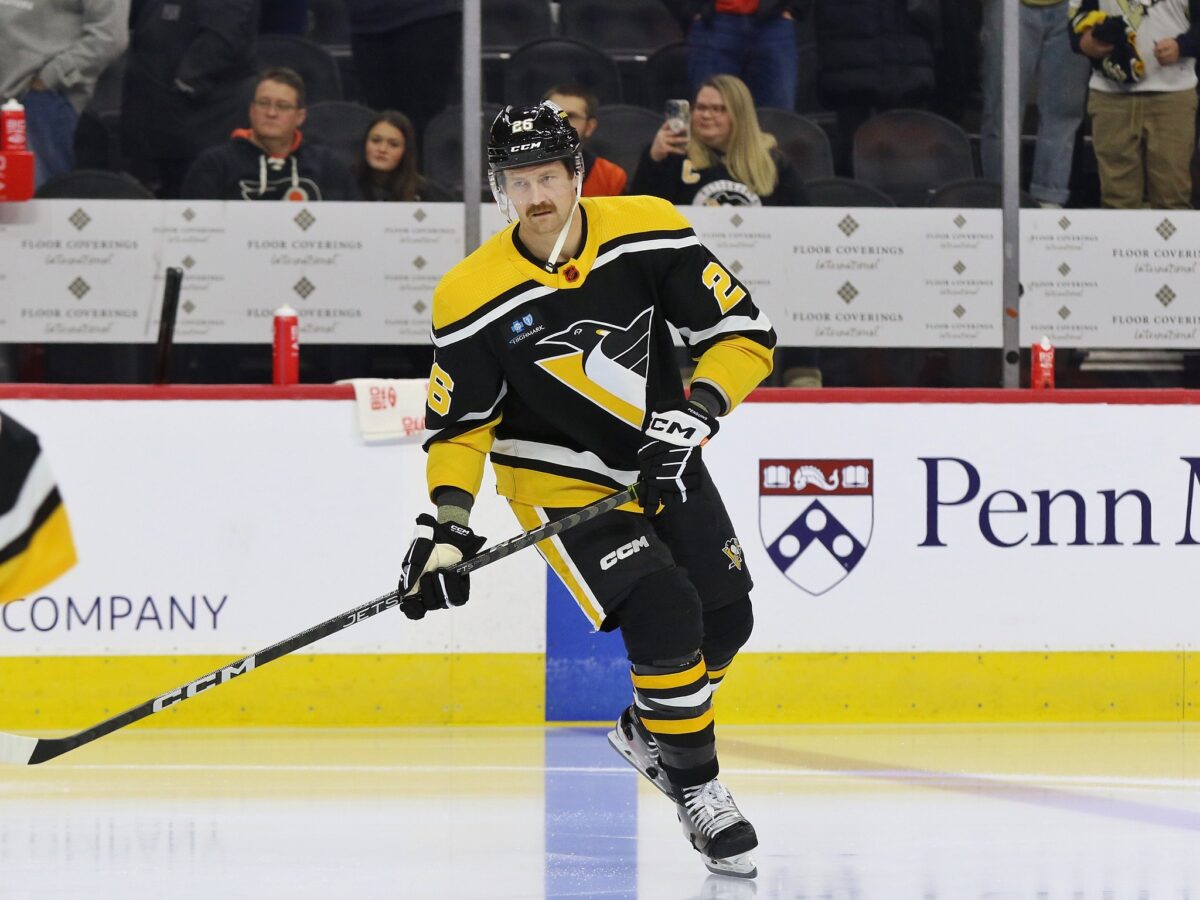During his post-free agency press conference, Detroit Red Wings general manager Steve Yzerman shared that he felt good about the players he brought in and how they’ll impact the team. In addition, he suggested that their additions would help elevate the play of those already on the roster.
“We’ve added NHL-quality players to the roster and we hope to be more competitive, and the players will feed off of that,” Yzerman noted.
In all, Yzerman acquired nine NHL players—five forwards, three defensemen, and one goalie—via trades and free agency. Today, we’ll examine the roles those players will likely fill and what to expect in terms of production.
Alex DeBrincat – RW
Contract: Four years – $7.875 million AAV
Role(s): DeBrincat will be a top-six forward for the Red Wings, with a majority of his time spent on the top line. He’ll also man the left flank on the top power play unit, where he’ll be the primary shooter.

Value/Production Expectations: It will be interesting to see how DeBrincat—who has historically thrived with elite playmakers—meshes with Detroit’s top forwards. Dylan Larkin and Lucas Raymond are dual threats – solid playmakers and shooters, and David Perron is more of a shooter than a passer. Andrew Copp has decent playmaking skills as well. None are elite, though.
All of this to say, I don’t think 40 goals is likely. DeBrincat scoring 30 is much more probable. Either way, he gives the Red Wings a sorely needed scoring boost and adds a ton of value to the power play.
J.T. Compher – C
Contract: Five years – $5.1 million AAV
Role(s): Compher’s role with the Colorado Avalanche was to be a middle-six, all-situations center. In Detroit, he’ll likely play a similar role, centering the third line and being a main component of the penalty kill.
Value/Production Expectations: Compher is not going to top his 2022-23 numbers (17 goals and 52 points). He’s not playing with Mikko Rantanen anymore. Apart from last year, he has averaged roughly 0.43 points per game, and that’s what I expect him to produce in 2023-24.
His contributions will go beyond scoring, though. Expect Detroit’s penalty kill to be better with Compher playing a leading role. He’ll also match up well against opponents’ top players and reduce their quality chances against.
Klim Kostin – LW
Contract: Two years – $2.2 million AAV
Role(s): Consider Kostin to be an Adam Erne replacement. He’ll skate in the bottom six and lead Red Wings forwards in hits. Given the makeup of Detroit’s roster, it’s unlikely Kostin sees significant power play or penalty kill time – this lack of a special teams role could make him a frequent healthy scratch.

Value/Production Expectations: I think ~20 points—or about 0.3 points per game—is about right for Kostin given his role. That’s pretty much what he produced in a similar role for the Edmonton Oilers last season.
One key stat to note, though, is Kostin’s career shooting percentage – 17.4 percent through 103 games. That’s very good, especially for a bottom-six forward. The Red Wings will be in great shape if this continues, though it would not be surprising to see Kostin’s shooting percentage decrease with a larger sample size.
Daniel Sprong – RW
Contract: One year – $2 million AAV
Role(s): Sprong will likely spend most of his time in the bottom six, where he thrived last year for the Seattle Kraken. He’ll also be an asset to the power play with his soft hands and quick release. Sprong could be a great fit as the left flank on the second power play unit.
Value/Production Expectations: Historically, the forward has been able to produce strong possession and shooting percentage numbers while playing a limited five-on-five role. I expect this to continue in Detroit, with 20 goals being a realistic possibility.
Christian Fischer – RW
Contract: One year – $1.125 million AAV
Role(s): If Sprong is the offensive-first bottom-six wing, Fischer is his opposite as a defensively inclined bottom-of-the-lineup forward. He’ll skate on the third or fourth line and be a primary penalty killer. Fischer will also serve as a spark plug for the Red Wings, being the first man in on the forechecks and laying hits whenever he can.

Value/Production Expectations: If Fischer can maintain a spot in the lineup, he can probably reach 10 goals and 20 points for the year and have a positive impact on the penalty kill. That said, there’s no guarantee he’s in the lineup every night given Detroit’s depth up front.
Fischer is also a high-character individual who will raise the collective average in the locker room.
“There is no bad day in Christian Fischer’s life,” Arizona Coyotes coach André Tourigny told PHNX’s Craig Morgan. “He brings a smile to everybody’s face.”
Shayne Gostisbehere – LD
Contract: One year – $4.125 million AAV
Role(s): It’s anyone’s guess which pairing—second or third—Gostisbehere will skate on. That said, he will be deployed frequently for offensive zone starts and is a leading candidate to quarterback the second power play unit.
Value/Production Expectations: Between favorable five-on-five starts and power play time, I anticipate Gostisbehere scoring around 10 goals and reaching the 30-point plateau. His addition should also improve the second power play unit, making it more dangerous and free-flowing compared to what we’ve seen in years past.
Justin Holl – RD
Contract: Three years – $3.4 million AAV
Role(s): Essentially, Holl is the opposite of Gostisbehere. Based on what management has said, he’ll be a go-to for defensive zone starts and figures to have a role on the penalty kill.
Value/Production Expectations: Don’t expect too much from Holl. He only had four primary points last year—on a high-scoring Toronto Maple Leafs team, no less—and was average from a penalty kill standpoint. Having positive possession and expected goals-for numbers will be a win.
Jeff Petry – RD
Contract: Two years – $2,343,750 AAV
Role(s): If Gostisbehere leans offense, and Holl leans defense, then Petry is the bridge between the two as an all-situations defender within the bottom four. He could see some time on the second power play—either as the quarterback or on the left flank—and will likely have a minor role on the penalty kill. In addition, Petry is likely the first choice for top-pairing duties if Moritz Seider or Jake Walman miss time.

Value/Production Expectations: Historically, Petry has been a strong offensive contributor. He also turns 36 midway through the season and is joining a new team. Expect Petry’s offensive numbers to decline a little bit – 15-20 points in 60-plus games is a fair projection.
James Reimer – G
Contract: One year – $1.5 million AAV
Role(s): Reimer was brought in to be the backup goalie. Not a 1B to Ville Husso’s 1A – the backup. He’ll make around 25 starts … if he beats out Alex Lyon for the backup gig.
Value/Production Expectations: Best-case scenario, Reimer is a competent backup and gives the Red Wings a chance to win whenever he starts. A more likely outcome, though, is that his numbers end up looking similar to Alex Nedeljkovic and Magnus Hellberg’s from last year.
Final Word
The Red Wings should score much more in 2023-24 given the players they brought in (and those who left). DeBrincat and Sprong could combine to score 40-50 goals, with Compher, Kostin, and Fischer contributing in other ways.
Defensively, Detroit’s additions greatly outweigh the value provided by the outgoing Robert Hagg, Jordan Oesterle, and Gustav Lindstrom. Gostisbehere and Petry should be able to elevate the Red Wings’ offensive output from the point and improve team defense.
Overall, the Red Wings will be a better team than what we saw in 2022-23. Playoffs are a realistic and attainable goal after the latest roster makeover.
Data courtesy of Natural Stat Trick, CapFriendly, and NHL.com.
